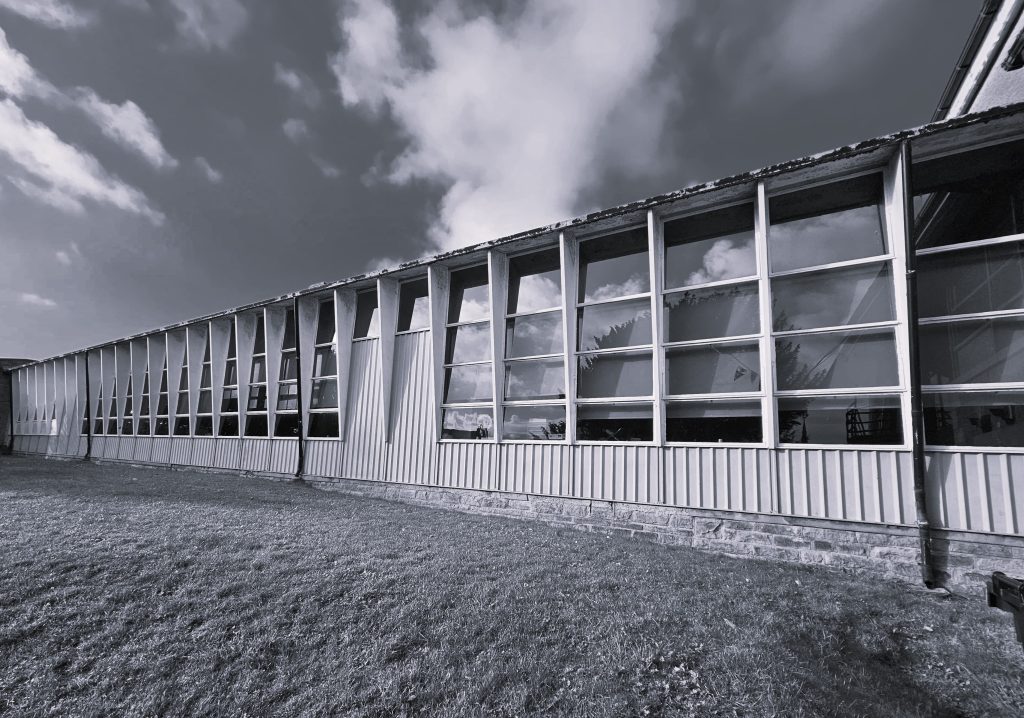
Modular construction methods have been around for a very long time and as technologies and knowledge develop so do the quality of the buildings produced.
Our Associate Director, Jonathan Vine has surveyed countless types of buildings over his career. This week he was surprised to encounter an almost forgotten type of post war prefabricated school building that he has only encountered once before.
The Bristol Aeroplane Company – Aluminium Prefabricated School
After World War II, the UK faced a significant challenge in rebuilding infrastructure, including schools, to meet the demands of a growing population. To address this, innovative construction methods were explored to accelerate building times and reduce costs. One notable development was the creation of prefabricated aluminium school buildings, a collaboration between the Bristol Aeroplane Company and the architectural firm Richard Sheppard & Partners.
The Bristol Aeroplane Company, renowned for its expertise in lightweight, durable materials, repurposed its wartime knowledge of aluminium for post-war construction. Aluminium, being both strong and light, was an ideal material for prefabricated buildings. The use of prefabrication allowed large sections of the buildings to be manufactured in factories and then quickly assembled on-site, significantly reducing construction time.
Richard Sheppard & Partners, a well-known architectural firm, worked closely with the Bristol Aeroplane Company to design functional and aesthetically pleasing school buildings. The firm had already gained a reputation for its modernist approach to educational architecture, focusing on flexibility, natural light, and cost-effectiveness—features that complemented the use of aluminium.
These schools, often referred to as “Bristol-type” or “Bristol Aeroplane Schools,” were characterised by their modular design, enabling easy expansion or modification. The aluminium structure provided durability and resistance to corrosion, making it particularly suitable for the British climate. Large windows and open-plan layouts promoted a bright, airy atmosphere conducive to learning, while the speed of construction helped address the post-war building shortages.
Though originally intended as temporary solutions, many of these prefabricated aluminium schools remained in use for decades, demonstrating the durability and practicality of their design. This collaboration between aviation engineering and modernist architecture highlighted how wartime technological advances could be repurposed to meet the needs of society in peacetime.
Summary
These types of schools are filled with period features and interesting construction details. Although not up to current standards these buildings and buildings like these enable us to learn how our industry has had to adapt to respond to social and environmental pressures throughout time. These are subjects construction professionals are grappling with day in, day out.
